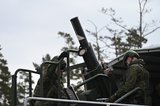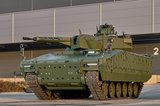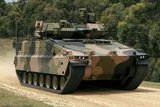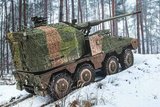Armies turn to armour and self-defence as support vehicles near the frontline
A French Army IDV 8×8 recovery vehicle with protected cab being put through its paces. (Photo: STAT)
While the invasion of Ukraine has resulted in high attrition rates for armoured fighting vehicles (AFVs), an even larger number of vital wheeled support platforms has been lost, especially by Russia.
Why are these vehicles on the front line? Forward-deployed units have to be kept supplied with fresh personnel while casualties are taken to the rear, and of course essential loads of rations, fuel, water and bullets must be delivered. In weight terms, the largest proportion of supplies is artillery ammunition as vast amounts of shells and rockets are being used by both sides.
There is evidence that both Russian
Already have an account? Log in
Want to keep reading this article?
More from Land Warfare
-
![South Korean companies turning necessity into export opportunity]()
South Korean companies turning necessity into export opportunity
South Korea’s particular geopolitical situation and threat environment has created a defence industry ecosystem of substantial size and breadth.
-
![“A new philosophy of defence”: ASELSAN sets out ambitions for the future]()
“A new philosophy of defence”: ASELSAN sets out ambitions for the future
In Conversation: Shephard’s Gerrard Cowan talks to ASELSAN CEO and President Ahmet Akyol about how the business has evolved and expanded over the past five decades, and its aim of becoming a top 30 global defence company by 2030.
-
![Still no clarity on the future of the British Army’s new wheeled artillery system]()
Still no clarity on the future of the British Army’s new wheeled artillery system
The UK donated its AS90 155mm/39cal tracked self-propelled howitzers to Ukraine ahead of planned retirement and bought Archer platforms to fill the gap. Eventually RCH 155s were ordered but the procurement effort remains under a cloud.





















